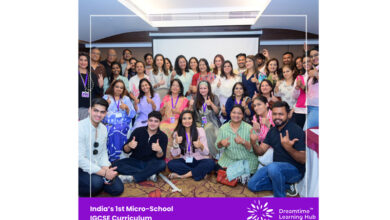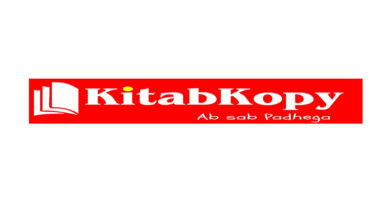Vineet Gupta Ashoka University Founder elucidates metaverse possibilities for education in future

In Mark Zuckerberg announced the rebranding of Facebook as Meta in October 2021, ushering in a lot of hype for the technology. The Metaverse is expected to revolutionize how humans consume media and information. “A fully 3D virtual world, in which people are able to communicate, collaborate and contribute without actually meeting, seems like something from a science fiction film or video game, but it doesn’t seem surprising considering the rate at which digital technology has progressed in the 21st century,” says Vineet Gupta Ashoka University Founder.
The idea of how the metaverse could actually help us stay productive despite not being able to physically represent ourselves found validation during the pandemic, when, for the first time in decades, humans and their families had no option but to stay at home due to the threat posed to them by the pandemic. After just a few months of the pandemic, several blockchain companies announced plans for their versions of the metaverse, which would allow users to interact, buy assets, trade, and compete. Upon Meta’s entry into the field, the entire industry took off.
The implications for education. What role can Metaverse play in the future of education?
In the world of education, metaverse applications and tools have tremendous potential. Due to the pandemic, students were one of the most affected groups. Their overall development was definitely hindered not only by missing out on a key education period, but also by their inability to interact with teachers and peers. Children were forced to interact with multiple edtech tools during these years out of necessity, resulting in major behavioral changes. However, engagement and retention remains a problem for these tools, as students return to schools and colleges.
“The metaverse can solve the problem of engagement as it is going to be far more immersive than anything we have ever witnessed before. It will allow users to represent themselves in a completely digitized world and interact with their peers, forge new connections with strangers and explore avenues which would be deemed impossible physically. The experience will definitely be worth the repeat value and as newer use-cases are introduced by the developers the popularity of these platforms will grow manifold in the coming years,” adds Vineet Gupta Ashoka University founder.
Through its 3D immersion and engaging environments, online education can be made far more effective since teachers can create customized classrooms digitally that their students can attend through their metaverse avatars. Students can get as close to a real-life classroom experience as possible, even if they are not physically present. With the same technology, technical education would experience a major boost. A lab or onsite experiment would be far more entertaining, without the risks involved, and also save educators money on expensive equipment.
It is possible that students from India could login to the Metaverse from India and then catch up with digital avatars of their peers at the digital rendition of Central Park in New York. They can also attend virtual lectures by the brightest minds with the digital avatars of their peers at some of the best institutions in the world. The possibilities for collaboration and information exchange in this world of unlimited possibilities is immense. As an example, Biology students around the world can work together on decoding a new virus virtually, without any of the dangers or costs associated with such a project. Our future biologists could be far better prepared for any natural pandemic or man-made bioterrorism if this is done.
Metaverse critics, however, claim there would be too many distractions for children in such an environment due to the seemingly thousand other things you can do while connected to the metaverse. It may also be argued that middle-class students are unable to afford expensive specialized hardware and higher speed internet required to run a virtual asset heavy service. A technological divide could deny young minds equal opportunities because of their financial backgrounds. In addition, with no regulatory oversight, is the metaverse a safe environment for young impressionable minds?
“With billions being invested in this space, the metaverse is here to stay. It is the coming together of the internet, social media and gaming to form a platform which could be used by the entire human race in the coming future. Children of the next generation will inevitably spend a lot of time in this virtual world and educators will be forced to re-design curriculum on this basis. As more users are on-boarded, ways to minimize costs will surface and help users access this technology at affordable prices. Just like the internet, everyone would eventually find their way into the metaverse”, concluded Vineet Gupta Ashoka University founder.








